Interview with Douglas Hopkins Part II: Perfumery As A Labor Of Love - {Passion for Perfume - Portrait}
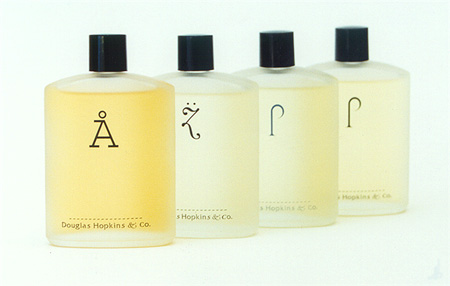
(Continued from Part I of the Interview - please take a cup of tea and enjoy the second part!).
Douglas Hopkins: The story my new friend revealed over the course of many months -- she came to trust my genuine interest in my product, was not one of lawsuit, but one of her own life-long desire to revive the family fragrance [Prastara]. This
story tied in quite directly to the events of the end of WWII. Many people believe fragrance is at all levels a “money printing machine” – as the founder of Revlon once called it, but this exists only at the mass market level. Art versus commerce --commerce is where it is truly “juice”; as your devotees know, these are scents that most often don’t last beyond the first year and backed by a 20 million dollar launch promotion. As an art, it is a labor of love.
Marie-Hélène Wagner: Do you know the cologne’s original French name before it was christened with a Slavic name?
DH: This is subject to continuing investigation.
MHW: As this was a cologne developed by a chemist to Louis XIV, one would think there would be some documentation left about it in France? Have you conducted research from that angle?
- It is my understanding that there is no such documentation, but I must say in a case of high coincidence, one year after we offered the Versailles Museum the privilege of selling Prastara, they came out with their own brand claiming a French perfuming expert derived it from research. I've been unable to track this any further so I don't know one way or the other about its authenticity..........
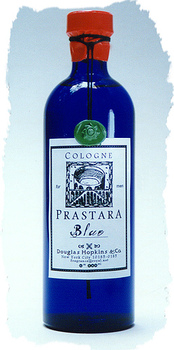
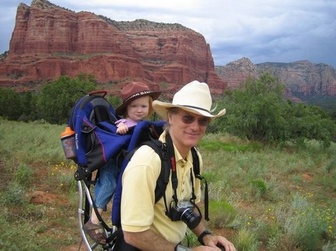
One of the primary facts I've been able to establish is the consistent use in Prastara of fragrancing flora reportedly indigenous to the vast gardens of Louis XIV who commissioned it.
MHW: Were there interesting reactions to your perfume in France? For example, I am wondering whether you contacted the people - Elisabeth de Feydeau, Francis Kurkdjian - who worked on M.A. Sillage de la Reine for Château de Versailles?
DH: My first solid contact with the French was during a thrilling trip to Paris to meet with the fragrance buyer at Galeries Lafayette. Coincidentally, in my early Prastara history, Galeries Lafayette made a brave but rather lame attempt to open an American branch in Trump Tower, next to Tiffany's. They made the mistake of selling only French products. The only exception being to carry Prastara! Not even Prastara could save them. This nevertheless served as my foot in the door fifteen years later, when in 2004 Prastara became the first American niche scent that Galeries Lafayette agreed to carry in the history of the store. At the time, France's leading fashion critic declared my fragrance designing to be "more French than the French". My packaging is unlike any other, described variously as functional, pragmatic, post-9/11, utilitarian minimalism, “anti chic”. To my surprise, the French buyer told me the French do not appreciate anti-chic. I guess this isn’t a natural aspect of their fiercely intellectual individualism. And very astutely, through my Paris agent, they asked that I remove the griffin/dragon, our featured emblem on Prastara, as it had nothing to do with Louis XIV! For Americans, Kings and Queens are myth; for Europeans they are forcibly school-memorized history, nor can one use the “Louis XIV” name without government approval.
MHW: How popular was this cologne in Eastern Europe before the fall of the Soviet Union and today in Poland since they are the ones who still manufacture it?
DH: This is a somewhat difficult question to answer precisely. While I do have the factory’s Communist era production numbers, which were quite good, I don't have any other Russian industry numbers of that period for comparison. Interestingly under the Russian COMECOM trading system, a representative from Moscow would visit the factory annually to assign production numbers, with 90% of the goods being shipped directly to Moscow, and the other 10% left to the factory's discretion. Apparently a good part of the payment was barter in raw materials rather than cash; the 10% was used to pay staff, also often through local barter.
MHW: Do you work with noses from the industry?
DH: Yes, I most certainly do, as it would be quite pretentious to presume I could originate an interesting scent of any complexity on my own. Fragrancing is a complicated craft of the interaction, both in oxidation time and in combination, of 4000 possible oils! I presently work with the two top European fragrancing firms, the best, and had the great privilege to work with a superb perfumer at one of them who gave my small atelier his heart. This would not happen with the present economics of these giant international conglomerates. There are now, for example, minimum fifty gallons drum oil orders, well over ten thousand dollars.
Prastara Blue, my first men’s fragrance development, made at the request of Bergdorf Goodman, after our initial Prastara Royal success, was very difficult. My personal starting point to creating Blue was my past in the 60’s living in Southern California; eau so much patchouli! I found I had the olfactory visions, but no vocabulary. With my perfumers, gracious patience and several years, it finally emerged to everyone’s satisfaction. The perfumers and other experts who sample it all tell me it defies any known category, perhaps because it does have those California roots well defined! Each of our new fragrances took from one to two years to develop, doing new variations on a monthly basis. I conduct the general direction, known as the brief, and the perfumers then listen, intrigue and surprise…and then they listen more. I did discover an acute sense of differentiation in my smell, sensing one oil from another even in small mixes of many other elements. This helps a working cordiality with the perfumer, as he knows I will be able to follow his subtle refinements.
MHW: Regarding the packaging, where does this idea of reproducing a traditional wicket casing for the bottle originate from?
DH: The top to bottom, hand woven, willow wicker wrapping is solidly historical. Eight hundred years ago glass was rare and precious and obviously fragile, so a woven wrapping perfectly suited the irregular shapes of hand blown glass as a protective cover. I’ve seen this covering in many cultures, even American Indians with incidental bottles they obtained early in contact with Westerners. It is my understanding, as far as our historical research has gone, that this is a direct attribute of Prastara's historical royal pedigree.
MHW: What are some of the reactions to your perfumes that you recall with most pleasure?
DH: Truthfully, the reaction I am most looking forward to is a coincidental "bumping into" a stranger wearing one of my fragrances. This has never happened, and remains a relatively unlikely event given my cornfield residence versus the Bergdorfian clientele! However, there certainly are a few fun incidents, primarily from customers. As mentioned, outside of Prastara, which I inherited, my fragrances are very personal, developed slowly with the help of world-class expertise. Integral is my experiences of education, living and working in Europe, and twenty years in the fashion field, also with both American and European customers.
To truly reflect the XGF namesake, a stunning Swedish fashion designer, I wanted "Åse" to be explosively alluring, moreover, it being my first original fragrance. My motivation was to put her on the star map, but in true manic- depressive Scandinavian tradition, she left me before it was finished and tried unsuccessfully to sue me for using her first name. It is like the fulfillment of a Bergman story, to say the least.
My initial inspiration for Åse was two existing fragrances, Guerlain Shalimar, the most alluring fragrance on the planet, the second, "Van Cleef", is very hard to find. I stumbled on it in the Van Cleef store, next to Bergdorf’s in New York. I tried to hire the Van Cleef perfumer, especially when I learned she was another "cross-cultural" phenomenon: Parisian-Vietnamese, but the company wouldn’t even let her talk to such a small firm as mine. This results in the Van Cleef fragrance layering, rich jungle orchid mystery, in a friendly, subtle manner and style of a refined haute Paris scent.
Back to your question; we hear stories of guys panting after hot babes wearing Åse...after all, that's the purpose, crudely put, right? One young, single woman told me she was at her crowded California gym, lounging around the pool after exercising -- making sure she was wearing Åse -- when a guy comes up and says "Wow...I have to tell you...you smell great!” He had been all the way at the other end of the pool. Getting a slight whiff of Åse, had then exercised great determination to scrutinize some 25 or so women around the pool in his effort to locate the wearer, over an above all that chlorine and sweat! I have to agree, this bombshell scent is sultry to the max, and has the unusual quality of being fairly quiet, with the contradiction of tremendous "lift". It is an "entrance" perfume: it speeds across an entire room with drama, lingers then vanishes -- unlike Shalimar. It hints of decadence, a sort of lightly spiced, hotly ingénue romance.
My greatest direct perfume pleasure is that of my wife of eight years, who in addition to being the answer to my mother's prayers – in my marrying so late in life – has faithfully worn my “Zazou” most every week of our life together. After I left Russia on my first trip to meet my wife to be, starting from an initial and most fortuitous accidental Internet introduction, she went to borrow a neighbor's use of the only phone in her building, causing her to nearly swoon at the redolence of Prastara Blue. This lingered lightly from my use of the same phone the evening before to confirm my Moscow flight. Finally, as I was switching from photographer to fragrance, a gradual but definite process, one art of sensory imaging to another, my concerned mother sought higher level career guidance for me, and sharing it she quoted the Bible: "Fragrance brings joy to the heart." There's no greater definition of what we do than that!
Extended interview with additional discussion of the fragrances:
Marie-Helene: After you had recreated Prastara, which as we understand it was motivated by your discovery of an ancient recipe and a site of production in Poland, what was your next fragrance?
Douglas Hopkins: [The order of events is slightly different from the above.] I first negotiated the rights to "Prastara" from the Polish factory, as described earlier. This was early after the fall of Communism and the cooperative factory, along with their suppliers, had irresolvable problems with the Western expectations of stringent quality control. We were regretfully forced to abandon the otherwise well established production in Eastern Europe.
Shifting to the United States became an opportunity to revise the Prastara formula, which turned out to be an extremely difficult process, along with sourcing the willow bottle weaving, which must be done on the bottle; these tasks ultimately took over six years .
With respect to the fragrance it was my absolute goal to adhere to the original, on the other hand the original itself used to vary. The Prastara fragrance reformulation turned out to be extremely elusive, much to its credit. The final mix required some of the best noses in the industry quite a long time to resolve. We were aided in this process, as well as in the three subsequent fragrances of my own origination, by an extraordinarily rare 1696 French perfuming manual given to me by friends from their royal castle library.
During this period of uncertainty, with respect to the original Prastara suppliers, I had asked both they and several of the best fragrancing houses to propose new products. This introduced me to fragrancing. I discovered my nose was of a certain sensitivity sufficient to detect the smaller percentages of oils used to round out the layers. More vital, one of the perfumers put me through “basic olfactory training”. It would be rather Napoleonic to march into a fragrancing lab and tell them to clear the decks, I'm here! This is an all too unfortunate script with everyone a perfumer these days, movie stars and legions of consultants.
Fragrancing is as much art as chemistry; best when in the family for several generations. Corporate designer name-brands are too often submerged in the focus group sniff test... the results shouldn’t be called "scents", maybe nose candy is more appropriate. When you think back to the first "designer brands", such as Coco Chanel, you have a saga of passion and genius, with three or four generation perfumers at their side. Or you have that famous story -- forgive me, I can't recall the perfumer and the fragrance, early this century; one of your readers will know this immediately -- who, having been flatly turned down by the elite Parisian department store buyer, either poured or "accidentally" spilled on the front entrance floor his fragrance as he was leaving the store [Editor’s note: François Coty or his wife depending on different versions of the story and La Rose Jacqueminot]. You might call this "sweet revenge". The spill caused an immediate and overwhelming demand by the women entering that day, and the store was alert enough to take the line, which went on to lasting fame and fortune. That spontaneity is past; now you need a celebrity endorsement, or a $20 million annual advertising budget just to see the buyer. It is no longer the fragrance itself. I was fortunate in my blind beginnings that Prastara was a tried and true fragrance with its appeal to both men and women, thanks also to the singular willow wrapping, and the Sun King pedigree.
My next fragrance, after the Prastara makeover, turned out to from romantic inspiration, a gorgeous blonde, insanely talented Swedish fashion designer I dated. I decided the best way to help put her talent on the map was to create a fragrance in her name. In a fortuitous coincidence, the New York office and labs of the European fragrance house I had chosen to work with was located in the same building as Bergdorf Goodman. More fortunately still, this was still a period in time when European companies doing business in the US still had a Old World mentality in their approach. In my case, they had no problem working on a potentially small product for a niche atelier.
Soon after they closed all of those facilities, as perfuming in America is for the most part about mass-markets. I'm not speaking against this, as those scents bring as much pleasure to the user than the generally more sophisticated ones in limited production do to their European users. The lab located so conveniently right in the city, along with the extremely efficient method the German company had set up of relaying batch mixing between the perfumer in Europe and the lab in New York all joined in a wonderfully creative partnership.
Since I didn't have a fragrancing vocabulary, I would go across the street to Bergdorf’s, and Barneys up the street, to do a lot of test sniffing. I would come back to the lab describing, “This element of that brand.” "Åse" (Pronounced "OH-seh"), was the result, a spicy attar with powdery undertones. May I quote the scent’s description from our 1995 Bergdorf Goodman launch press release; it is rather pleasing having my work described thusly, and the fact that nobody has been able to successfully translate it into French. I'm sure one of your readers out there is equally and deeply conversant in both languages and fragrance, and can take a shot at it. Unless the job is otherwise too complex, I'll offer a several bottles of fine fragrance thereto.
“Flux is the scent of Åse: sophistication taunted by liberation; a cool refinement punctuated by undercurrents of sensuality so pervasive as to be uncontrollable. A rare fertile rose attar evokes provocatively redolent feminine warmth discreetly veiled by cool top notes of virgin gold spice. It is civilized self-confidence tempered by earthly obsession. Take care: removing the stopper of this delicate cordial yields no symmetry, no obvious answer; only a cloak of purpose. Balance and abandon are uneasily poised as a woman's pulse point is grazed by a trace of the essence.”
The Bergdorf’s fragrance buyer once told me that they see approximately 300 fragrances a year there, have a two to three year waiting list, and generally accept two or three new products annually! Therefore, it is quite a medal of honor that I tell you we were invited to join Bergdorf’s on the basis of the "Åse" scent alone. We went on to15 years of success, later primarily in the men's department, with the power Prastaras, as well as an extended men's skincare line.
MHW: Is there a line of continuity between Prastara and Prastara Blue that would explain the similarity in the names?
Prastara Blue came about when our wonderful buyer at Bergdorf’s suggested expanding our original Prastara Royal success. Having also acquired the self-confidence of a remarkable "fan base" with Åse, I rolled up my sleeves and prepared for the challenge of a fragrance from scratch. Again my trusty, ancient perfumers manual was a starting point. I told the perfumer of my 1960's college years in La Jolla at UCSD. These were the wild mid-1960’s of Vietnam era protest, of hippies, "free love"; all headquartered in California. I must insist that I was much more of an observer than a participant, nevertheless one could not avoid becoming closely acquainted with overpowering patchouli, and a wide variety of incense.
I also have an interest in romantic old airplanes, particularly amphibians, from my father's descriptions of his childhood, seeing the huge propeller driven Pan Am clipper taking off from San Francisco Bay and heading out for the two-three day's trip to exotic Hong Kong. This was my initial fragrancing brief: patchouli and 1930's warm wood/aluminum! I supplemented this with the need to reference the original Prastara and its royal origins, and in another non sequitur, my musical passion for American blues. I asked the perfumer to listen to the penultimate rock 'n roll blues song, Bob Dylan's "Watching the River Flow".
It was intriguing that the perfumer initiated a concentration of fruits from which we achieved exactly the "royal-metallic-blue-hippy" results I sought. Have a look at the ingredients: Pineapple, Coconut, Plum, Lemon, Bergamot, Mandarin, Neroli, Lavender, Fir, Spices. Middle notes - Cyclamen, Geranium, Jasmine, Carnation, Heliotrope, Cinnamon. Base notes - Vanilla, Patchouli, Amber, Cedarwood, Sandalwood, Oakmoss, and Musk.
"Fruity" ended up pleasing not only my high school romance mentality, it instantly became a hit with all of our New York male customers, and including the female beauty editor of Vogue at the time who wore it every day. I must say, however, it hasn’t ever struck me as fruity. One gentleman came back to Bergdorf after a bottle had opened in his suitcase, not to sue but to beg for another bottle! The most interesting complement has come from a number of perfumers, who tell me Prastara blue is of no known perfuming category.
MHW: You have explained that Åse and Zazou were inspired by former girl-friends of yours; how did those experiences translate into perfume compositions?
With Åse, I kept with royal origins. The Scandinavian mythology of Åse is of a princess whose father the King, knowing he's going to die in battle, encloses her in a wooden box and sets her adrift on the sea. Washed up on a distant beach, she is found by another, childless King -- only in myths -- and lives comfortably ever after, although forever pining for her lost father. Therefore Åse is somewhat of a film noir, the fragrance motto being "Crafted in tears for a princess of myth."
With the final girlfriend fragrance "Zazou" -- I later happily married. -- the image was young, exotic, eclectic, headstrong, unpredictable, above all an ingénue. The sophisticated demure, innocent “hot babe” was the culmination and general specialty of my fashion photography years with W, Vogue, Mademoiselle, and the like, so I thought to put her personality in a bottle. With the self-confidence of several years success in Bergdorf Goodman, I decided to work with the ultra luxury perfuming house, Firmenich.
They turned out to be more corporate, with account reps and little direct contact with the Perfumer, but the process remained similar, and I was fortunate to acquire a representative who was a "Zazou", herself, an attractive French woman with singular style. Between her, the excellent perfumer, and my visions, we ended up with a stunning work of art, if I may say so. Totally eclectic, a top note of blackberry, nothing out there remotely like it.
One perfumery who ordered Zazou, on a regular monthly basis, told me if I missed a shipment, there would be a revolution on Long Island! The defining motto for this fragrance became "A California scent with hints of sanity." Although I didn't learn this until later, "zazou" comes from the nickname for the passionate young teenagers of the French World War II underground, who would risk anything and everything for their country.
Thank for this opportunity to recall these pleasurable moments of creative endeavor, and I look forward to hearing from the discerning noses reading this, especially if they have one of our four fragrances in hand.
Douglas Hopkins
Tuesday, December 18, 2007
The new e-commerce website for Douglas Hopkins & Co is today up and running: Perfume Factory to accompany the Scented Salamander interview. Please be prepared for glitches!
For 30 days, a %15 discount on any Douglas Hopkins fragrance, excepting special order, is extended to Scented Salamander readers.
The website Google Buy buttons do not presently accept coupons, so please alert the company with a note from the "Contact" page of the site as to your name and address in order to link your discount to your order.
You may also purchase Prastara Royal, Louis XIV's fragrance commission, on eBay for a special discounted $45 (Retail$146) starting bid. 25 bottles are available, so starting price is likely to be end price, and free shipping. The website has a link to the eBay auction.







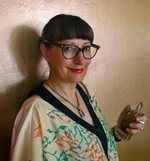
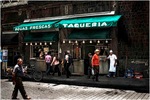

If I understood weel, the line is not available yet in Paris?
The idea of using Versailles's plants from the gardens in the time of Louis XIV is quite interesting.
Le Sillage de la Reine - is a perfume inspired by Marie Antoinette, wife of Louis XVI.
Was Prastara brought by the polish wife of Louis XV - Marie Leszczynska (as for the Christmas tree said to be brought in Versailles by her) ? A question to investigate.
As for "Le sillage de la Reine" to be very clear: there is no original formula entitled the perfume of Marie Antoinette. What is sold is a recreation of what a famous perfume should have smelled like in that period, based on the ingredients used that time. It is more a methaphorical perfume but because it is sold in Versailles, very expensive ... usual buyers would think it's the actual formula found somewhere. :)